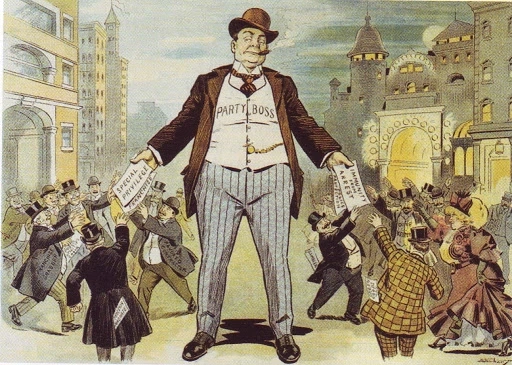Introduction: Deciphering Political Machines
Political machines, the unseen gears that once turned the wheels of power, wielded unparalleled influence in shaping political landscapes. These entities, often driven by charismatic figures, operated behind the scenes, steering elections and policy-making. Understanding these historical powerhouses unveils a complex web of connections, strategies, and control mechanisms. Delving into their workings illuminates not just the past but also sheds light on how political systems evolve.
What Defines a Political Machine?
A political machine can be likened to a well-oiled engine, efficiently operating to consolidate and exert power. These entities centralized authority within a particular party or group, dictating nominations, patronage, and policies. Operating in urban centers primarily during the late 19th and early 20th centuries, they boasted strong grassroots connections, ensuring a loyal voter base through favors, services, and sometimes coercion.
The Anatomy of Influence: How Political Machines Operated
Political machines thrived on their ability to mobilize communities, sway elections, and control resources. Ward bosses, often pivotal figures, acted as intermediaries between the machine and the citizens, offering services, jobs, and assistance in exchange for votes and allegiance. Patronage, a cornerstone, ensured loyal supporters received governmental positions or contracts, fostering dependency and allegiance.
The Rise and Fall of Notorious Political Machines
In history's annals, certain political machines stand out for their reach and impact. The Tammany Hall in New York City, led by "Boss" Tweed, epitomized the iron grip of a political machine. Its reach extended to every aspect of city governance, from public works contracts to the judiciary. However, these machines, often entrenched in corruption and abuse of power, faced eventual downfall as public outcry and reforms eroded their influence.
The Legacy and Modern Reflections
Though the era of classic political machines has waned, their legacy reverberates in modern politics. Their tactics of mobilization, community engagement, and influence persist in various forms. Contemporary political strategies often reflect shades of machine politics, albeit adapted to current contexts and legal frameworks.
FAQs: Unraveling the Intricacies
Q1: Were political machines legal?
A1: While not inherently illegal, many political machines engaged in corrupt practices like bribery and coercion, which led to their eventual downfall as legal reforms tightened regulations.
Q2: How did political machines maintain power?
A2: Political machines wielded power through patronage, controlling resources, providing services, and fostering a loyal voter base through favors and assistance.
Q3: Did political machines operate only in the United States?
A3: While the term is often associated with U.S. politics, similar systems existed in other countries, with variations in structure and function.
Q4: What led to the decline of political machines?
A4: Factors such as public outrage over corruption, legal reforms, and changes in societal structures contributed to the decline of political machines.
Q5: Are there remnants of political machines in today's politics?
A5: Elements of political machines, such as community engagement tactics and influence networks, persist in modern political strategies, adapted to contemporary legal frameworks.
Conclusion: Echoes of Influence Across Time
Political machines, once formidable forces shaping the political landscape, have left an indelible mark on history. Their rise, dominance, and eventual decline reflect the intricate interplay between power, governance, and public sentiment. While their era has passed, the echoes of their strategies and tactics continue to reverberate, offering insights into the ever-evolving nature of political influence and maneuvering.


